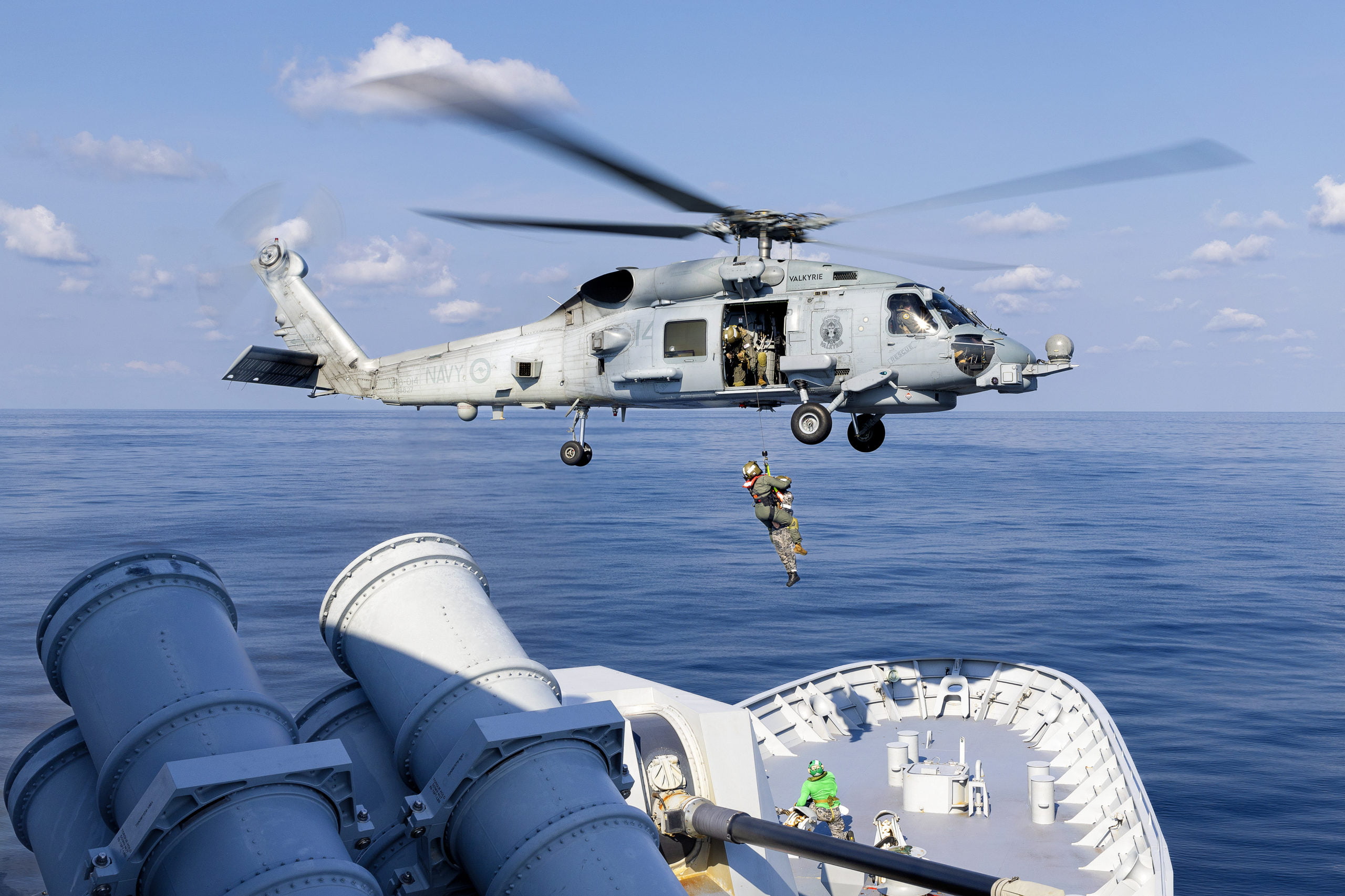By Robbin Laird
During my current visit to Australia in support of the Williams Foundation seminar held on 27 September 2023, I had a chance to talk with one of the speakers at the conference Brigadier General (Retired) Ian Langford about the DSR and its impact.
During our discussion, Langford provided as clear a statement about how to understand the DSR, the strategic shift in Australian defence and the challenges going forward.
What follows is what he told me.
“The challenge that the ADF has been given from the government is how to transition from a defence force that was inherently designed around the principal task of generating military capabilities that are no longer relevant to the threat or to the changing strategic operating environment as well as the need to adapt to a new concept of joint warfighting, especially as it applies to the integration of space and cyber.
“It is reminiscent in some sense to what happened in the U.S. with the adoption of the National Security Act 1949 which reshaped the U.S. military from being service orientated to becoming ‘joint by design’.
“Historically, the ADF has been somewhat designed to fight as a service alongside an ally. The U.S. Navy, the Royal Australian Navy, the Royal Australian Air Force and the USAF are more closely interrelated with each other than they appear to be with their own armies. Joint doctrine, common command and control systems, joint targeting networks and a unified operating concept are all necessary if the ADF is to be more joint and therefore more capable.
“The DSR has begun this transition.
“In the DSR, the use of a ‘deterrence by denial’ strategy requires the ADF to use geography to contextualise it future operational environment. Extended range and battlefield geometry, to include airbases, ports and logistical nodes are critical to this, as is increasing focus on key continental areas of concern to include critical infrastructure and manufacturing hubs; it is no longer appropriate to a simple 360-degree view terrestrial defense which the ADF does not have the capacity for anyway.
“In terms of the DSR impacts on the region, to quote a former Prime Minister, “Do we seek security in Asia, or from Asia? The answer to this question is not in the realm of military strategy, but rather exists in the national psyche; I still think this has not been resolved in terms of how Australians think about defense and security more broadly.
“Managing our economic security and national security will be a critical feature of Australian statecraft. It’s not a binary issue, because they ultimately must coexist.
He concluded with this thought: “If you read only the DSR, then you don’t get a complete picture of what national security requirements look like from a whole government perspective.
“The DSR only explains part of the security challenge Australia has in front of it; to put it simply, it is more than just military power.”
Featured Image: HMAS Toowoomba’s embarked MH-60R helicopter “Valkyrie” conducts a personnel transfer exercise on the forecastle during regional presence deployment.
The Royal Australian Navy is undertaking a regional presence deployment in Southeast and Northeast Asia. During the deployment, HMA Ships Brisbane, Stalwart, and Toowoomba will conduct training, exercises, and other engagements with Australia’s regional partners. Regional presence deployments demonstrate Australia’s commitment to, and engagement with, the region.
The deployments play a vital role in Australia’s long-term security and prosperity by protecting Australia’s interests, preserving a rules-based order, enhancing cooperation and relationships with regional partners and allies, and developing capability and interoperability.
Credit: Australian Department of Defence
25 September 2023


